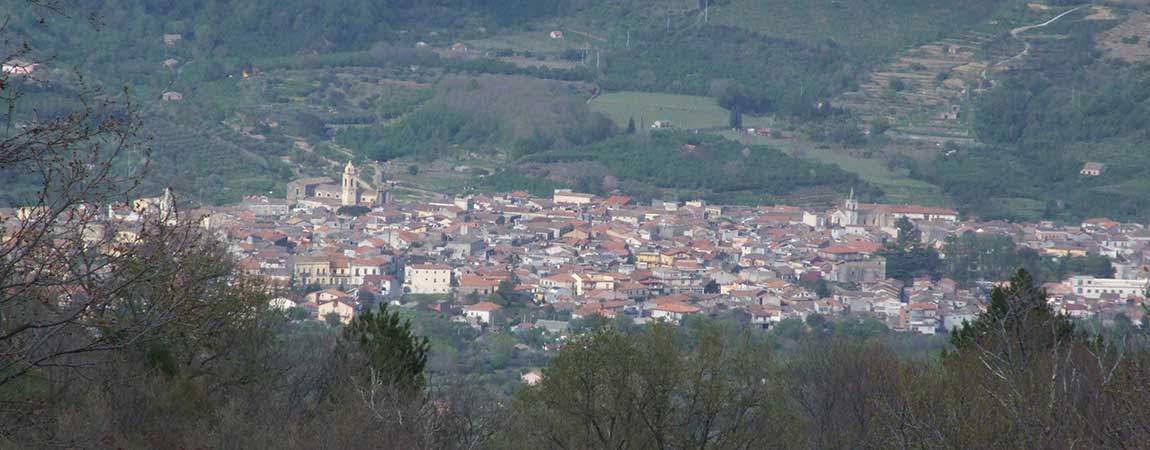
Suspended between the ancient rural traditions of yesterday and the lively and fast modern pace of today, Linguaglossa is a village in the Metropolitan City of Catania.
In the village there is no shortage of the wild side, in contact with nature, that of North eastern side of Etna.
Immersed in a cool climate and rich in architectural beauty, the village of Linguaglossa awaits you in Sicily, with its atmospheres to be discovered.
From Linguaglossa to Etna
Located in the vast Etna park, municipality of Linguaglossa it rises about 550 meters above sea level on the north-eastern side of the large volcano. The entire area of the municipality reaches up to the Ragabo pine forest, reaching the highest peaks of Etna. Here, at 1800 meters above sea level, there are also the ski resorts di Provençal Plan, known by the name of North Etna.
The road leading to the beautiful plant branches off from the village towards the west, but all around the landscape is no different: the northern side of the volcano is characterized by the presence of vineyards and hazelnut groves which soften the landscape; the valleys, between rocks and Bougainvillea are populated by flocks and the presence of more uncultivated and wild areas makes this panorama truly unique.
In Linguaglossa, from the town to the volcano, it is a real pleasure to walk in nature! But those who love the sea will find the wonderful Ionian coast of Sicily less than 30 km from the village, with the magical beaches of Taormina and Letojanni.
Linguaglossa, expansion of an ancient village
Today Linguaglossa is a municipality populated by 5.000 inhabitants and a destination for many tourists; but if we go back in time, we can discover the entire history of the village.
Just 70 years ago, Linguaglossa was the battlefield of the great artist Salvatore Incorpora: here, thanks to his skills and great passion, the sculptor managed to save the Church of San Francesco di Paola from oblivion, renovating it and avoiding its destruction.
Over the centuries, Linguaglossa has always been a town sensitive to the activity of Etna, in fact in the sixteenth century the village was partially destroyed by a volcanic eruption, just as the damage caused by the was significant 1693 earthquake.
However, it is precisely Etna that is responsible for the name current of the village, Lingfield. In fact, the union of the two terms refers precisely to one lava strip, the one that in the XNUMXth century pushed the locals to rename the town that way.
For several centuries, Linguaglossa was a fiefdom and the young village took part in the revolt of the Sicilian Vespers in 1282. Legend, however, has it that Linguaglossa was founded in 1100 by a group of Genoese sailors.
What to see in Linguaglossa
Get ready to discover the village with a small virtual tour, to taste all the gems of this treasure.
To start the tour, we suggest you visit at least three of the many churches in the town: the Mother Church of Santa Maria delle Grazie, in Piazza Madonnina della Pineta, the Church of San Rocco on the square of the same name and the Church of San Francesco di Paola in Town Hall Square.
The Matrix, built in 1613, is still one of the most famous symbols of the town today, in which the lava stone of the facade and the beautiful carved wooden choir inside the Church can be recognised; In San Rocco the building of worship is ancient, in fact it dates back to the sixteenth century, but today it appears like a modern church, in fact it has been renovated several times over the centuries. The Church of San Francesco di Paola has also become the custodian of the Nativity scene by Salvatore Incorpora Museum dedicated to him, in fact inside it is possible to admire the sculpture of the Professor, as well as the works of local twentieth-century painters.
In Linguaglossa, then, you will also find civil buildings, such as the Palazzo Comunale, which is located right next to the Church of San Francesco e Villa Milan, in the center of the town.
In the center there are also many other churches, accommodation facilities and clubs that welcome all tourists.
What to do on Etna and its surroundings
A table in Linguaglossa
From winter sports and walks in the countryside, visits to the historic center and many works of art to discover, Linguaglossa is a small center full of activity. For a visitor interested in discovering life in the village at 360°, however, a stop at the table cannot be missed! And here in Linguaglossa, the table is Sicilian, declined according to the Catania tradition. Strong dishes of local cuisine, therefore, there are spaghetti with lobster and risotto with marinara, but also the leg of lamb stuffed with champignon mushrooms and bacon, the aubergine caponata and finally, the desserts, irresistible such as Sicilian cannoli or almond paste.
How to get to Linguaglossa
Are you ready to discover these and other wonders of Etna village? Linguaglossa is located in the Metropolitan City of Catania and getting there is easy, both by car and by train.
By car:, from the A18 Messina-Catania take the exit for Fiumefreddo, about 6 km from the village. By train, getting off at Taormina station, 12 km from the town, you will arrive in the center by taking the bus or shuttle.









